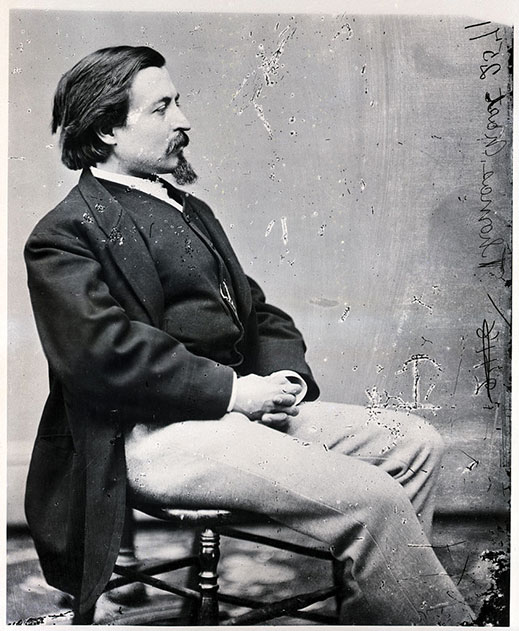
Thomas Nast (1840-1902) was by any measure the greatest political cartoonist in American history. During the Civil War, Abraham Lincoln referred to Nast as “our best recruiting sergeant.” Later, Ulysses S. Grant said that he owed his election “to Nast’s pencil.”
Although Nast is erroneously given credit for the donkey as the symbol of the Democratic Party (it was first utilized by Andrew Jackson in his 1828 presidential campaign), he popularized the image. Being a strong advocate of Lincoln’s progressive Republican Party, Nast did pioneer the elephant as the GOP’s symbol. In Nast’s drawings, the elephant embodies wisdom and virtue, while the donkey signifies a jackass. Why Democrats to this day continue to embrace the donkey as their party symbol escapes me.
Two other popular symbols appear repeatedly in Nast’s drawings, most of which were published in Harper’s Magazine. While Uncle Sam preceded Nast, our modern image of that gentleman is of Nast’s design. Nast was also responsible for the still prevalent image of Santa Claus as a rotund, bearded, benevolent figure.
Given Nast’s importance in American history, one wonders why he hasn’t gotten more recognition from New Jersey, the state he called home for much of his adult life. A park in his name would be nice, or a rest area on the Turnpike, or perhaps induction into the New Jersey Hall of Fame. He was on the ballot in 2012, but did not get sufficient support in the public vote. He hasn’t been on the ballot since. (Hall of Fame spokesman Norris Clark says that’s not unusual; he cites Flip Wilson, Ernie Kovacs and others who have been dropped from the ballot after failing in the public vote.)

Photo by Bettmann/Matthew Brady
Nast’s absence from the Hall of Fame may be partly because many who vote are not familiar with his name. But there is another factor: Some regard a few of Nast’s drawings as anti-Irish and anti-Catholic. Whether that’s true or not, Nast was representative of his time, when Irish immigrants were largely derided. Nast was waging a war against the corrupt William “Boss” Tweed of Tammany Hall, whose keenest supporters happened to be Irish Catholics. Nast, born a Catholic, believed in absolute separation of church and state; Tweed used bribery and other underhanded means to champion public support of parochial schools. Let us remember: Not until John Kennedy’s presidency did the concern of many Americans about the potential of Catholics in high office taking orders from the Vatican finally evaporate. Few know, and no one cares, that those currently second and third in line to President Barack Obama—Joe Biden and Paul Ryan—are both Catholics.
Are the P.C. police at work on the Hall of Fame ballot? Clark says no. “The Hall of Fame does not have a political correctness policy when it comes to its nominations,” he declares.
Whatever the case, when considering Nast, we should look at his entire body of work. He was always on the side of liberty and equality and was a vigorous supporter of African-Americans, Asian Americans and other marginalized groups. At least Nast’s home in Morristown, where his friends, President Ulyssess S. Grant and Mark Twain, visited, has a state historic sign outside and is also a National Historic Landmark. Across the street from the Nast house is the Macculloch Hall Museum, which has the largest collection of Nast’s works in the world and exhibits them regularly.
Ken and Nancy Miller live in the Nast house and have restored it beautifully. Nancy is of Irish origin, her people having come to America during the terrible Irish potato famine. She and Ken think Nast’s absence from the New Jersey Hall of Fame is absurd. Also, when I mentioned the Nast controversy to a close relative who lives in Madison and is both Irish and Catholic, he said, “With these matters you have to look at a person’s entire résumé.” I say, “Amen to that.”
Michael Aaron Rockland is professor of American Studies at Rutgers and a longtime contributor to this magazine.
